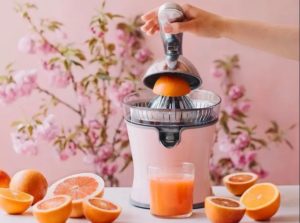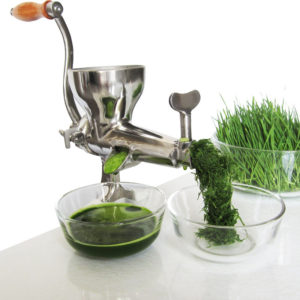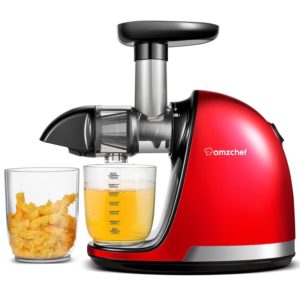Juicing has been one of the most popular health and wellness trends in the past decade. Although juicing should never replace a diet rich in whole, fiber-rich fruits and vegetables, many individuals find it a simple and delicious way to increase their intake of essential vitamins, minerals, and antioxidants.
Many cities have juice bars but purchasing fresh juice daily can be costly. Consequently, many juice lovers prefer to make their own at home.
This article examines 10 of the best juicers and the factors you should consider before purchasing.
How to select the best juicer for your needs
Before making a final decision on a juicer, several factors must be considered, including its style, size, and intended use.
Type of juicer
Initially, you should determine whether you prefer a particular type of juicer. Juicers can vary in price; some may be better suited for specific fruits and vegetables than others.
Masticating juicers, for instance, are relatively quiet and ideal for leafy greens such as spinach and kale, whereas centrifugal juicers are typically louder but more cost-effective and suitable for fruits and other types of vegetables.
Some juicers have a larger feed chute, allowing you to feed whole fruits and vegetables without cutting them into smaller pieces.
We will discuss this in greater depth in the future.
Size
Juicers are available in a variety of sizes. Horizontal juicers produce more juice, but vertical juicers are more compact and may be preferable if space is limited.
Speed
Slow juicers are ideal for juicing soft fruits, while faster juicers are suitable for juicing firmer produce. Some models may also include multiple speed settings, though this feature is typically more expensive.
Cleaning
Consider that juicer with fewer detachable parts may be simpler to disassemble and clean. Some may be dishwasher-safe for expedited cleanup.
How we chose
This article’s selection of juicers was based on the following criteria:
- Efficiency. Juicers can effectively extract juice from a wide variety of fruits and vegetables.
- Features. Some juicers have unique features or capabilities, such as an extra-wide feed chute, multiple speed settings, or additional attachments.
- The simplicity of use. Juicers have a straightforward, user-friendly design and are specific to assemble.
- Price. Each juicer offers excellent value for its price.
- Customer evaluations. Most customer reviews posted online are positive.
- Vetting. Healthline has evaluated each product to ensure it meets its medical and business standards.
A note on cost
Following the dollar signs ($–$$) are general price ranges. One dollar indicates an affordable price, while three-dollar signs indicate a higher price.
Prices typically range from $80 to $1,095; however, this can vary depending on where you shop.
Pricing guide
- $ = under $150
- $ = $150–$300
- $$ = over $300
Types of juicers
The four primary types of juicers are citrus, centrifugal, masticating, and triturating. Each type is described below, along with potential advantages and considerations.
Citrus juicers
Citrus juicers are the most straightforward and reasonably priced type. Their function, however, is quite limited.
Citrus juicers are primarily designed to extract juice from citrus fruits, as their name suggests. Therefore, if you want to juice various fruits and vegetables, more than a citrus juicer is required.
Consequently, it is an excellent option for anyone who wants fresh juice for essential culinary and bartending endeavors or enjoys fresh orange juice with breakfast.
Centrifugal juicers
Typically between 6,000 and 16,000 RPM, centrifugal juicers use the force generated by rapidly spinning metal blades to extract the juice.
As the blades rotate, they cut and press fruits and vegetables against a mesh filter, separating the juice from the pulp.
One of the most popular types of juicers, centrifugal juicers are relatively inexpensive, simple to clean, and capable of quickly juicing various fruits and vegetables.
However, centrifugal juicers are not ideal for juicing leafy greens, and they frequently leave behind very moist pulp, resulting in less juice extraction.
Because the spinning blades generate heat, juices made with this type of machine tend to oxidize rapidly and have a shelf life of no more than 24 hours.
For optimal nutrition and flavor, juice made with a centrifugal juicer should be consumed as soon as possible; therefore, this style could be better for those who want to drink water now.
However, if you want an automatic juicer that works quickly and is simple, a centrifugal juicer may be a good choice.
Masticating juicers
Masticating juicers, also known as slow or geared juicers, use one auger to crush fruits and vegetables slowly while pressing them against a filter to extract the juice.
They are ideal for juicing various fruits and vegetables, from hardy vegetables such as carrots, celery, and beets to softer fruits such as oranges and berries. In addition, they are one of the most effective tools for juicing leafy greens such as spinach, kale, and chard.
Unlike centrifugal juicers, masticating juicers generate low heat due to their slower operation. This prevents oxidation and extends the juice’s shelf life to 72 hours.
In addition, masticating juicers produce significantly more juice than other types, reducing food waste.
The primary disadvantages of masticating juicers are their expense and frequently required time cleaning after use.
However, the long process may be worthwhile for the superior quality juice that retains its freshness for several days.
Triturating juicers
Like masticating juicers, triturating juicers have a double auger design. This type of juicer uses twin rotating gears to grind and crush fruits and vegetables to extract the maximum amount of juice while producing dehydrated pulp.
Triturating juicers are ideal for vegetables, leafy greens, and soft fruits such as berries, mangoes, and melons.
They are typically quieter than other machines, such as centrifugal juicers, and can also be used for chopping vegetables and grinding nuts for nut butter.
However, they are typically more expensive and, as horizontal juicers, require more counter space than other types.
Questions asked frequently
How do you use a juicer?
In many instances, only washing and preparing the produce is required before juicing. Depending on the size of the feed chute on your juicer, you may need to cut certain fruits and vegetables into smaller pieces.
The fruit must be cut in half beforehand for some juicers, including handheld citrus juicers. Then, place the fruit in the juicer and squeeze the handles to extract the juice.
What makes a juicer suitable for novices?
Look for a juicer with a large feed chute if you are new to juicing to reduce the amount of preparation required. Ideally, it would help if you looked for a simple juicer to clean and take apart between the uses.
How do you make pomegranate juice?
To make pomegranate juice, cut off the top and remove the crown with a small knife. Separate the fruit into sections and disassemble it.
Next, remove the seeds from the pomegranate, place them in a blender, and pulse until the seeds and juice begin to separate. The fluid may be served undiluted or with a small amount of water.
When can babies drink juice?
According to the American Academy of Pediatrics, you should wait at least 12 months before introducing juice to your baby’s diet (1).
The Food and Drug Administration (FDA) recommends that infants, children, and adolescents stick to 100% fruit juice and avoid unpasteurized juice products, including homemade and freshly squeezed juices.
This is because unpasteurized juices may contain bacteria that would have been eliminated by pasteurization (2Trusted Source).
Check the label of store-bought juice carefully to determine whether it has been pasteurized; the FDA requires unpasteurized products to have a warning label.
Furthermore, while some pasteurized juices are shelf-stable, others may require refrigeration or freezing to prevent foodborne illness. The bottle will indicate whether refrigeration is required (4Trusted Source).
How do you juice ginger?
To extract the juice from ginger, peel it with the back of a spoon or a peeler. Then, cut it into small pieces and place each element in the juicer’s feed chute.
The conclusion
Numerous juicer options are available, but selecting one depends on your preferences, budget, and intended usage.
Citrus juicers are ideal for those who intend to juice only citrus fruits. In contrast, centrifugal juicers are superior for those who wish to pulp various fruits and vegetables efficiently.
Check out masticating or triturating juicers if you intend to juice wheatgrass or leafy greens or if you want juice with the most extended shelf life.
Related Posts
Best orange juicer for energy every morning
Disclaimer: There are affiliate links in this post. At no...
Read MoreBest Juicer For Carrots – A Comprehensive Guide
Disclaimer: There are affiliate links in this post. At no...
Read MoreBest Wheatgrass Juicer For Nutritious Juice Even On A Budget
Disclaimer: There are affiliate links in this post. At no...
Read MoreBest Juicer For Ginger – Which One Will Work For You
Disclaimer: There are affiliate links in this post. At no...
Read MoreWhy Trust Us
You will find what you are looking for at dulceriabakery. From classic to luxury brands, you'll find both. We will help you to select appliances that fit your needs, budget and lifestyle. Whether you want to stop by to learn more — or plan to make a major purchase — we’ll treat you like family and assist you every step of the way. Shop with us today to receive friendly and experienced help along the way.




